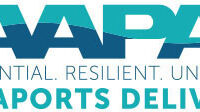Using Research to Prove the Value of the Port Industrial Sector

“From the Front Lines” is a new column for Seaports, one designed to share port leaders’ first-hand perspectives and insights based on their direct involvement in the Western Hemisphere port industry. If you are interested in contributing, contact Pam Maher, Communications and Publications Manager, at [email protected].
Supporting regional industry is an important part of the Duluth Seaway Port Authority’s work. We own and operate the Clure Public Marine Terminal, the one heavy-lift and general cargo terminal in the Port of Duluth-Superior. The Clure Terminal features 430,000 square feet of warehouse space, 40 acres of outdoor storage, a fleet of lift equipment, 7,000 feet of on-dock rail with direct access to four Class 1 railroads, and an intermodal terminal. We operate these assets as a multimodal logistics hub, providing transportation solutions and delivering supply chain cost savings that keep regional industries competitive in the global marketplace.
We understand that the industrial sector is an anchor of our region’s economic health, as it’s been for more than 150 years. And yet, in the mid-2010s, like many port cities that diversified their economic base, Duluth increasingly lost its connection to industrial land uses as the higher education, health care, hospitality and outdoor recreation sectors emerged as economic drivers. The Duluth zeitgeist identified with the natural beauty of Lake Superior, and the region’s outdoor recreation and wilderness offerings. “Industry” was not part of this identity. Duluth was repeatedly referred to as a “post-industrial economy.” Eventually, a city of Duluth planner stated that, due to digitalization, industrial jobs were disappearing and, resultantly, the city need not consider industrial land use in its comprehensive plan. Industrial disrespect had moved past idle chatter and into the policy sphere. It was time for action.
We contracted with the Initiative for a Competitive Inner City (ICIC) to conduct a study on the economic value and social significance of the city’s industrial sector. The study, based on 2016 data, was completed in 2018. The findings demonstrated that the industrial sector was still a powerful economic engine for the Duluth region, and could be the catalyst to spur equitable growth in all sectors. This gave us the ammunition we needed to help inform the uninformed. Today, industrial land use is alive and well in the city’s plans.
We recently refreshed the findings using 2019 data. The updated results support the original findings. Duluth’s industrial sector is still vibrant and represents 9,870 direct jobs in Duluth (out of 59,150 total jobs). The average annual income of a Duluth industrial worker was $69,000 in 2019, compared to $51,000 for all jobs, and only $48,000 when industrial jobs were left out of the calculus. Duluth’s industrial jobs not only pay higher wages, but also provide competitive benefits and opportunities for career advancement. These jobs allow people to save for retirement and college, and encourage spending back into the local economy. The kicker: Industrial jobs are accessible across a wide range of educational backgrounds from high school graduates to tradespeople and college graduates. Indeed, industrial jobs present an opportunity for equitable growth in our region, especially if programs and policies exist to address gaps in job access (addressing transportation and childcare considerations, for example).

Like many port cities, Duluth’s industrial sector helps drive economic stability and growth – even in 2021 and beyond. On a per-job basis, the industrial sector generates three times more local tax revenue and supports twice as many additional jobs compared to the rest of the economy. Every 10 industrial jobs in Duluth create or support an additional eight jobs in the region, while every 10 non-industrial jobs support an additional four jobs.The original study’s data helped inform a rich discussion around the value of industry, and the updated data keeps the topic alive with policy makers. Our message is that the industrial sector provides good wages, benefits and equitable opportunity, as well as economic stability. While industrial jobs are often viewed as a part of the past, it’s time to revise this way of thinking. Port authorities can help lead that effort. Advances in technology, commitments to process improvement, and evolved, highly regulated workplace safety and environmental controls mean that industry in the 21st century looks and behaves very differently than it did 50 years ago. That’s a change for the better. What hasn’t changed, however, is that industry can still be a strong prosperity engine for communities, not to mention a symbiotic partner for port authorities.




